To grade a Roosevelt dime accurately, examine wear on high points including Roosevelt’s hair, cheek, and jawbone on the obverse, plus the torch flame and leaf details on the reverse. Check for the “Full Bands” designation – two horizontal torch bands must be completely separated, indicating superior strike quality and higher value. Inspect for marks and scratches, particularly on Roosevelt’s cheek and torch bands, as these significantly impact grading. Evaluate strike quality (San Francisco and clad coins often show weakness) and original mint luster. Higher grades require minimal wear, fewer marks, preserved luster, and clear legends like “LIBERTY” and “E Pluribus Unum.” Full Bands combined with strong eye appeal typically command premium prices.
Roosevelt dimes might seem like pocket change, but learning proper grading can reveal hidden value in your collection. A single designation like “Full Bands” can multiply a coin’s worth several times over, while understanding wear patterns helps you distinguish between a $2 dime and one worth $50 or more. This systematic approach to grading Roosevelt dimes covers everything from identifying high-point wear to evaluating strike characteristics that professional graders examine.
Understanding the Roosevelt Dime Grading Scale
The Sheldon Scale rates Roosevelt dimes from 1 to 70, with specific terminology marking different condition ranges. Good (G-4) through Very Fine (VF-20) represents circulated coins showing moderate to heavy wear. Extremely Fine (EF-40 to EF-45) coins display light circulation with most design details intact. About Uncirculated (AU-50 to AU-58) shows minimal wear only on the highest points. Mint State (MS-60 to MS-70) designates uncirculated coins with no wear, differentiated by luster, strike quality, and contact marks.
Understanding these categories matters because price gaps widen dramatically at higher grades. An MS-63 1950-S Roosevelt dime might sell for $12, while the same coin in MS-67 condition commands $350 or more at Heritage Auctions. The difference lies entirely in your ability to accurately assess wear patterns and surface preservation.
Examining the Obverse for Wear Patterns
The coin’s front reveals wear through specific high-point areas that lose detail first. Roosevelt’s hair above the ear shows the earliest circulation wear—pristine detail indicates minimal handling, while smooth, flattened areas signal extensive use. The cheekbone catches contact frequently, developing flatness even on lightly circulated examples. Check the jawbone carefully, as this prominent area loses its rounded contour under circulation.
Roosevelt’s ear provides critical grading information. On uncirculated specimens, the inner ear shows complete cartilage detail with defined curves and channels. Very Fine examples retain partial inner detail, while Good grade coins display only the ear’s outline. The hair strands behind the ear should show individual separation on AU and MS coins—merged or indistinct lines indicate VF or lower grades.
The legend “LIBERTY” must show complete letters for any grade above Good. Examine where “LIBERTY” meets the rim—weak strikes sometimes create incomplete letters even on uncirculated coins. The date should display all four digits clearly, with weakness here typically indicating environmental damage rather than circulation wear.
Evaluating the Reverse Strike and Wear
The torch dominates reverse grading considerations. Flame details should show distinct separation between individual flame elements on AU and better coins. Circulated pieces display progressively flatter flame tops, with Very Good examples showing merged flame outlines. The torch handle below the bands rarely shows significant wear except on heavily circulated pieces, making it less useful for grade determination.
The olive branch and oak branch flanking the torch display different wear patterns. Olive leaves lose detail from their tips inward, with AU coins showing complete vein structure and VF pieces retaining only central veins. Oak leaves wear similarly, but their broader surface area shows flatness more gradually. Count the visible leaves—missing or fully merged leaves indicate Fine or lower grades.
The inscription “E PLURIBUS UNUM” arcs above the torch, with letter sharpness varying by strike quality even on uncirculated coins. Denver Mint coins from the 1950s and 1960s typically show stronger letter definition than San Francisco issues from the same era. Don’t confuse weak strikes with wear—weak strikes affect the entire design uniformly, while wear concentrates on high points.
The Full Bands Designation and Its Value Impact
The two horizontal bands wrapping the torch represent the most scrutinized feature on Roosevelt dimes. Full Bands (FB) designation requires complete separation of both bands across their entire width, with no merging, mushiness, or weakness visible under 5x magnification. This designation appears primarily on well-struck uncirculated coins, though some AU examples qualify if wear hasn’t reached the bands.
Strike quality varies dramatically by mint and year. Philadelphia Mint coins from 1946-1955 show FB characteristics on approximately 30-40% of uncirculated survivors. San Francisco coins from 1949-1955 rarely achieve Full Bands due to die spacing issues, with FB examples representing perhaps 5% of MS coins. Denver Mint production maintained more consistent quality, delivering FB strikes on roughly 50% of 1950s uncirculated dimes.
Price premiums for Full Bands grow exponentially with grade. Consider 1953-D Roosevelt dimes: MS-65 examples without FB sell for approximately $18, while MS-65 FB specimens command $65. At MS-67, the gap widens further—$95 for standard strikes versus $425 for Full Bands at major auctions. This 4-5x multiplier makes accurate FB assessment critical for both buyers and sellers.
Identifying and Evaluating Surface Marks
Contact marks accumulate during the minting process and subsequent handling, directly impacting numerical grades within the Mint State category. Major marks—those visible to the naked eye—carry more weight than minor hairlines requiring magnification. Location matters significantly: marks on Roosevelt’s cheek drop grades more severely than identical marks hidden in hair details.
MS-60 to MS-62 coins typically display numerous contact marks scattered across both surfaces, with several distracting marks in prime focal areas. MS-63 represents average quality with moderate marks but none particularly distracting. MS-64 coins show noticeably fewer marks, with none severe in primary design areas. MS-65 and higher exhibit only minor scattered marks, none located prominently.
The torch bands represent the reverse’s most critical area for marks. Scratches across the horizontal bands, even if Full Bands separation exists, can prevent FB designation or significantly lower grades. Examine the field (flat area) around the torch carefully—bagmarks here show prominently against reflective surfaces on proof-like coins.
Toning patterns also influence grading and value. Natural toning in blues, golds, and rose colors often enhances eye appeal, potentially raising prices 20-30% above white coins at the same grade. However, artificial toning, environmental damage, or unattractive dark spotting reduces both grade and marketability.
Strike Weakness Versus Actual Wear
Distinguishing weak strikes from circulation wear prevents costly grading errors. Weak strikes affect the entire design uniformly—if Roosevelt’s hair shows mushiness, the flame and bands typically display similar weakness. Circulation wear concentrates on high points while leaving protected areas sharp. A circulated coin with weak strike shows both mushy details everywhere AND flat wear on highest points.
San Francisco Mint dimes from 1949-1955 commonly exhibit strike weakness regardless of handling. The flame often appears flat or poorly defined, and the torch bands merge even on coins showing full mint luster. These technically grade as Mint State despite inferior eye appeal, commanding lower prices than well-struck MS coins at the same numerical grade.
Later clad Roosevelt dimes (1965-present) suffer from different strike issues. Die wear increased during high-volume production, creating progressively weaker details as dies aged. A 1970-D dime might show spectacular luster with zero wear yet display mushy torch details purely from die deterioration. These remain Mint State but struggle to achieve grades above MS-64 regardless of surface preservation.
Mint luster provides crucial evidence. Original mint luster appears as cartwheel effect—rotating the coin shows bands of light rolling across surfaces. Circulation interrupts this luster immediately, creating dull high points even on lightly worn AU coins. A coin with complete, unbroken luster across all surfaces grades Mint State regardless of strike weakness.
Applying Professional Grading Standards to Your Collection
Start grading practice with certified examples from PCGS or NGC holders, comparing your assessment against professional opinions. Focus initially on distinguishing Mint State from About Uncirculated—this separation requires identifying wear versus luster breaks. Hold coins at various angles under direct light, watching for the telltale dulling on high points that signals circulation.
Build a grading set covering key grades: AU-50, AU-58, MS-63, MS-65, and MS-67. Compare these references against raw coins, noting how contact mark quantity and severity shift across grades. Pay particular attention to MS-63 versus MS-64 transitions, where many collectors struggle—this boundary represents the difference between “acceptable” and “nice” uncirculated coins.
| Grade | Typical Value (1950-S) | Key Characteristics | Full Bands Premium |
|---|---|---|---|
| AU-50 | $3-4 | Slight wear on high points, partial luster | Not applicable |
| MS-63 | $8-10 | Moderate contact marks, average strike | +$12-15 |
| MS-65 | $18-22 | Few marks, above-average eye appeal | +$45-55 |
| MS-67 | $95-120 | Minimal marks, exceptional surfaces | +$280-350 |
For valuable dates or potential Full Bands candidates, professional grading becomes cost-effective. Grading fees run $20-40 per coin depending on service level, but this investment protects against overgrading errors that could cost hundreds in overvalued purchases or undervalued sales.
Maximizing Value Through Accurate Assessment
Accurate grading directly impacts your collection’s financial performance. Overestimating grades by even one point can mean paying 50-100% premiums for common dates, while underestimating might cause you to sell valuable coins for fraction of actual worth. Focus especially on distinguishing MS-64 from MS-65, where price jumps accelerate across the Roosevelt series.
Develop systematic examination habits: always check both sides under magnification, examine surfaces at multiple angles for hidden marks, and compare questionable coins against confirmed examples. When evaluating potential Full Bands coins, use at minimum 5x magnification—what appears separated to naked eye often shows merging under proper examination.
The combination of grade accuracy and Full Bands recognition transforms Roosevelt dime collecting from casual accumulation into strategic investment. That worn dime in your pocket stays worth ten cents, but identifying an MS-67 FB 1949-S in a dealer’s bargain bin—currently valued at $850 according to Heritage Auctions 2023 records—represents the payoff for mastered grading skills.
You may be interested:
- 1902 Dime Coin Value Complete Errors List With O S And No Mint Mark Worth Guide
- 1912 Dime Coin Value Complete Errors List And Worth Guide For D S And No Mint Mark Varieties
- 1913 Dime Coin Value Guide Complete Errors List S Mint Mark And No Mint Mark Worth
- Complete 1916 Dime Coin Value Guide D S And No Mint Mark Worth Plus Errors List
- 1919 Dime Coin Value Revealed D S And No Mint Mark Worth Up To 186000 With Full Bands
- 1924 Dime Coin Value Complete Price Guide For D S And No Mint Mark Errors Worth Discovering
- How To Grade Peace Silver Dollar Using The Sheldon Scale And Key Wear Areas
- How To Grade Walking Liberty Half Dollar Inspect High Points Luster And Wear For Accurate Assessment

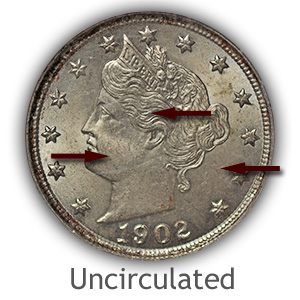
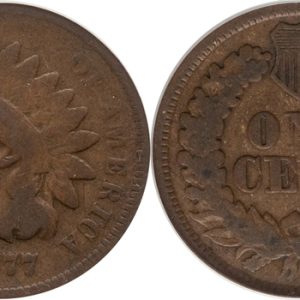
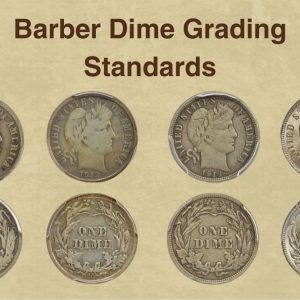
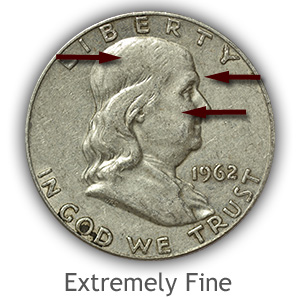
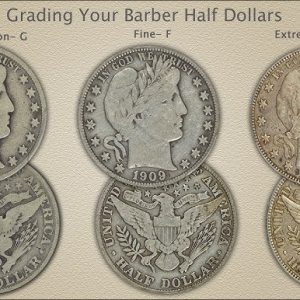
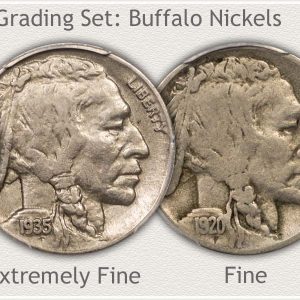
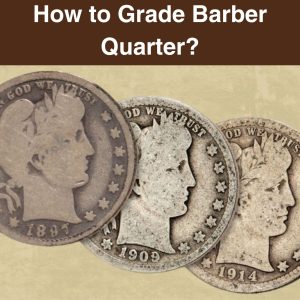
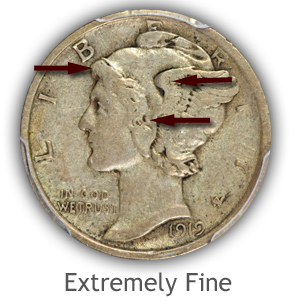

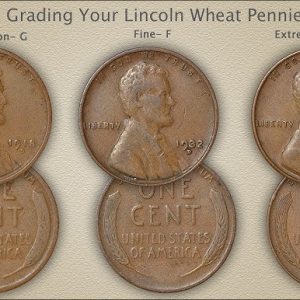
What Roosevelt dimes are worth looking for?
Some valuable Roosevelt dimes include the 1975 No S proof, the 1968 No S proof, and the 1949-S (key date). Other high-value coins are 1946, 1950, 1951, and 1956 silver dimes with deep cameo proof finishes, the 1966 SMS special strike, and the 1982 P without a mint mark. Error coins, such as the 1999 mule error or dimes struck on the wrong planchet, are also highly valuable.
What does FB mean on dimes?
To receive a “Full Bands” (FB) designation, there must be full separation between the bands in each group, especially the middle pair. Note: Grading services may differ in their criteria; consult your service’s grading standards for more information.
What year is the $2000000 dime?
1894-S Barber dime. The 1894-S Barber dime is a dime produced in the United States Barber coinage. It is one of the rarest and most highly prized United States coins for collectors, along with the 1804 dollar and the 1913 Liberty Head nickel.
What dime is worth $456,000?
💿 The $456,000 Dime?! 🪙 Most dimes are worth just 10¢… but the 1975 No-S Roosevelt Proof Dime is a legendary rarity. 🔥 ✅ Only 2 known to exist ✅ Proof coin with no “S” mintmark ✅ Sold for over $500,000 at auction 👀 Check your old proof sets & coin boxes—you might be sitting on a small fortune without knowing it!